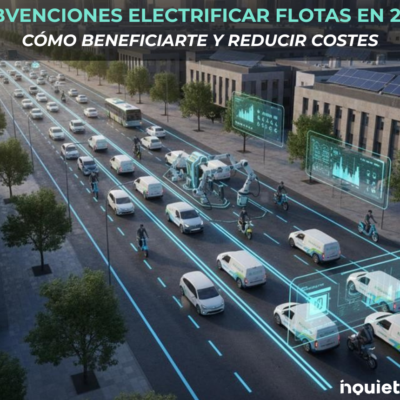Although electric vehicle (EV) technology has undergone rapid advancement in recent years, two of its biggest challenges still remain: limited autonomy and the need for an extensive and rapid charging infrastructure.
Fortunately, innovation in the field of electric mobility continues to move forward. And one of the most promising developments in order to address these obstacles is wireless charging on the road.
Can you imagine being able to recharge an electric vehicle whilst driving, without having to make long stops or look for a charging station? This possibility is becoming a reality thanks to dynamic or wireless charging technology, which could become a fundamental pillar for the future of electric transport. But how does this revolutionary solution work? What impact can it have on electric mobility? Keep reading!
How does wireless charging on the road work?
Wireless charging on the road is based on the principle of electromagnetic induction, a technology already deployed in other fields, such as the wireless charging of electronic devices. The concept of the process is straightforward, but its implementation is more complex.
- Road infrastructure: The first step towards making wireless charging on the road possible is the embedding of transmitter coils in the road pavement. These coils are connected to the electrical grid and generate an electromagnetic field when activated. They can be strategically placed on key road sections, such as highways or urban routes with high volumes of electric vehicle traffic.
- Technology in the vehicle: in turn, electric vehicles fitted with this system have receiving coils at the bottom, designed to capture the energy transmitted by the transmitter coils on the road. When the vehicle passes over the section containing transmitting coils, a wireless connection is established between the two, and energy is transferred without the need for cables or plugs.
- Efficiency and safety: energy transfer is fast and occurs without affecting other electronic components of the vehicle. What’s more, the transmitter coils can only be activated when they detect the presence of a compatible vehicle, maximising energy efficiency and minimising any loss in electricity. Some solutions already allow vehicles to recharge up to 50 km of autonomy in just 10 minutes, very useful for urban fleets or drivers on long-distance routes.
- Dynamic recharging on the move: the most interesting aspect of this technology is dynamic charging, which allows vehicles to recharge whilst travelling at speeds of up to 130 km/h, without having to stop.
Advantages of dynamic charging for electric mobility
This type of technology has multiple benefits that could change the electric transportation landscape:
- Reduction in downtime: drivers would no longer have to stop at charging stations to recharge their vehicles, thereby significantly cutting down on waiting times and improving efficiency on long-distance trips.
- Infrastructure optimisation: the installation of wireless charging systems on roads could be integrated into the existing infrastructure, reducing the volume of construction of new charging stations and lowering operating costs.
- Greater effective autonomy: dynamic charging allows vehicles to keep their batteries constantly topped up, removing one of the main barriers at present to the mass adoption of electric vehicles.
Impact on sustainability and the economy
Far from benefiting private transport exclusively, this technology can also be a key tool for public transport and commercial fleets. By enabling on-the-go recharging, fleets are able to operate continuously, which would increase their operational efficiency and reduce the environmental impact.
Wireless charging on the road is now a reality
Although wireless charging on the road is still at a development stage in many places, there are already pilot projects in various European cities, such as Saragossa, with the INCIT-EV project, and the future looks promising. This technology, funded by the European Commission, has already proven capable of providing an efficient solution for urban fleets, and it is expected to continue to evolve for applications in private vehicles and long-distance transportation.
It is becoming ever more certain that wireless charging on the road will be a fundamental pillar for the future of electric mobility, affording an innovative, efficient solution to the current problems of autonomy and recharging. With its ability to reduce downtime, improve existing infrastructure and increase the range of electric vehicles, this technology has the potential to transform the transport sector, moving us towards a more sustainable future.




